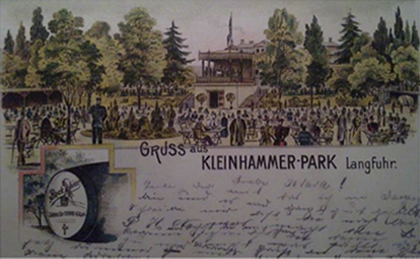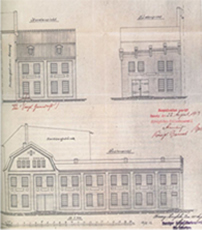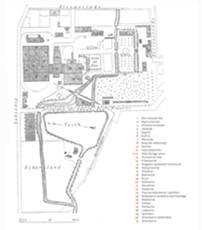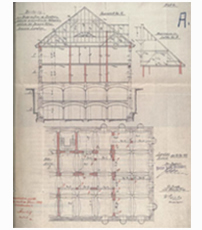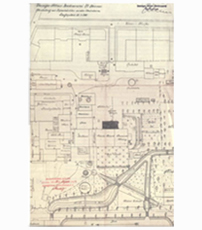Before we begin the story of brewery in Kuźniczki, let’s go back to the 1842 city of Pilzen, where some events occurred, which concluded in creating one of the most marvellous modern inventions – lager beer. The idea wasn’t new – beer was commonly known and drunk for many centuries, but it was mostly ale. During the brewing process, the yeast amassed on the surface was later removed. The product of the brewing was a dark and unclear drink, and because of the difficulties in getting better ingredients also sometimes dangerous to health. In Pilzen, a man called J.Groll successfully conducted the lower fermentation, which resulted in a creation of a great, golden-coloured and clear drink, which we know to this day. Commonly called Pilzner, in very short time has gained great recognition and since 1870 has been exported over the ocean. The consumers wanted a new drink, so new breweries were founded all over Europe and they all brewed lager beer. The same thing happened upon Motława, where brewing traditions were reaching medieval times, and Gdańsk’s beer was commonly known and praised.
Unfortunately, the first half of the 19th century wasn’t so prosperous for gdańsk’s brewing. The number of breweries successively decreased to seventeen in 1861 (at the end of the 18th century there were several dozens). The rebirth of beer demand was the cause of creating a new brewery in the premises of Wrzeszcz’s Kuźniczki estate. The company, which founded the brewery, was named Danziger Aktien Bierbrauerei (DAB), and the first day of its functioning (January 24th 1873) was the beginning of a brewing tradition, which continues uninterrupted for 128 years. What was the reason for choosing this localisation? First of all, through Kuźniczki estate flowed Strzyz stream, there was also a pond, which was a valuable source of industrial water and ice (remember that to create one litre of beer, ten litres of water are needed). Of course water needed for production was dredged from two wells. Also very important for this new investment was the neighbourhood of created in 1870 railway to Koszalin, which cut through the original Kuźniczki estate’s premises, largely and irreversibly changing it.
How did Kuźniczki look before the construction of the railway and DAB brewery? Just ninety years earlier about Kuźniczki estate a well-known painter, Daniel Chodowiecki, wrote: “The garden is really beautiful, with great, flowery garden patches, promenades, maze and theatre. (…) This locality, country and rural, has a park, in which there are ten fallow deer and two stags”. Beside that in the estate’s garden there were water cascades, stone sculptures, lime lanes, and most important – brewery.
The Kuźniczki estate owed its grandness, to Michael and Gottfried Schimdt, who bought those these lands in 1763 and afterwards decide to build in its premises layed in stone, rococo styled manor (built in 1763-1767). He funded the pompous garden premise and brought the sculptor Eggert (famous in his times), to create sculptures equal to the owner’s glorious vision. This way Kuźniczki changed from property focused on production (since the half of the 16th century there were manufacturing plants – including brewery, and circa the half of the 18th century there was a forge, mills, cloth mill, brewery and bleachery) in to residency full of parks and gardens. Nota bene, the name Kuźniczki derives from placed in the estate forge (in Polish forge is “kuźnia”). Unfortunately, the prosperous “court times” of Kuźniczki didn’t last long – in 1819 impoverished heirs of Gottfried Schmitd sold the derelict estate. Till the second half of 19th century, the owners of the estate changed very often, and the manor, as well as the park successively fell into neglect. But the greatest catastrophe was the creation of railway, which overcome a large part of the estate, although it brought some profit. Because of it a new owner appeared, with a vision to lead Kuźniczki to the 20th century.


